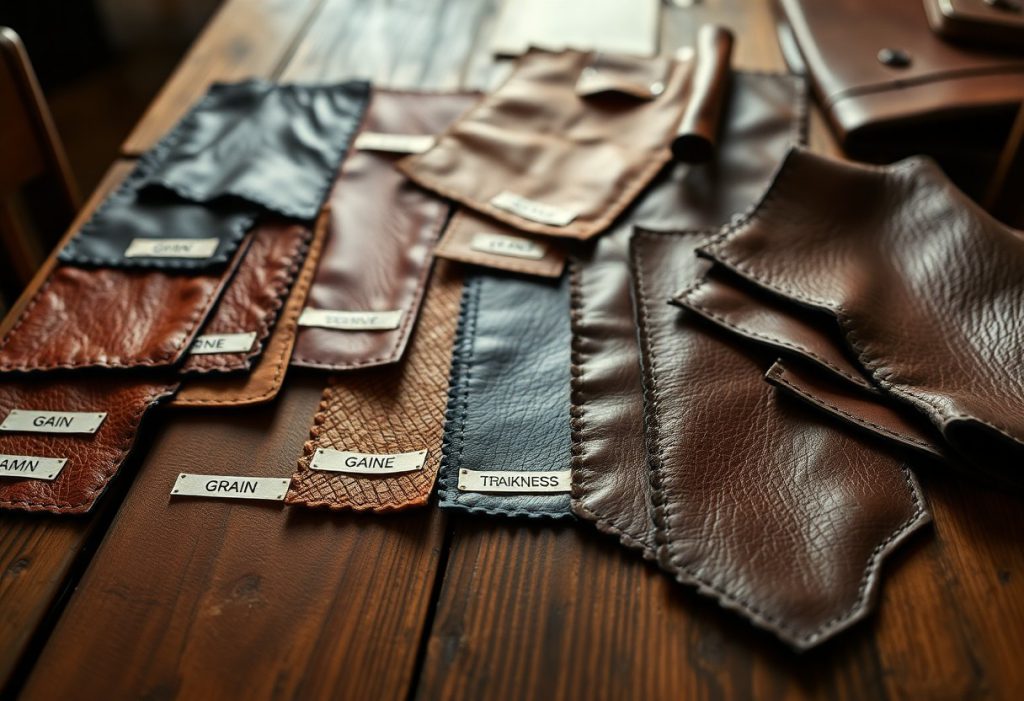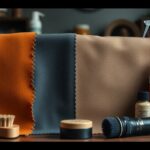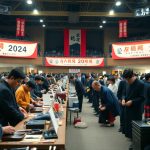Are you feeling overwhelmed by the vast selection of leather options available in the market today? This detailed guide is your go-to resource for making well-informed decisions regarding various leather products. Each type of leather has unique advantages tailored for specific applications, offering everything from the luxurious softness of calfskin to the remarkable durability of full-grain leather. By understanding the unique characteristics and origins of high-quality leather, you can ensure that your selection not only looks good but also enhances the longevity and performance of your items. Whether you're looking for shoes, jackets, or accessories, this guide will help you choose the most suitable leather type for your requirements. Remember, poor leather selection can lead to premature wear and financial loss, so let’s explore the various types and their ideal uses.
Explore the Diverse Types of Leather and Their Unique Characteristics
The extensive array of leather types available each boasts distinct properties and applications, especially in the field of footwear manufacturing. Here’s a comprehensive overview of the characteristics that set each leather type apart and how they can suit your needs:
| Leather Type | Main Characteristics |
|---|---|
| Full-grain | Unmatched quality, natural surface, ultimate durability |
| Top-grain | Refined sanded surface, good durability, budget-friendly |
| Split leather | Lower layer of hide, less durable, economical option |
| Nubuck | Sanded top surface, soft and velvety texture |
| Suede | Soft, fuzzy finish with limited water resistance |
- Grain quality is a crucial factor influencing the durability of leather, determining how well it withstands wear over time.
- Surface texture significantly affects both visual appeal and maintenance requirements, influencing the choice of leather for specific applications.
- Thickness is essential in determining the most suitable applications for each leather type, impacting overall performance and durability.
Understand Common Leather Types for Smart Selections
When choosing leather that fits your unique needs, it’s important to understand the common varieties and their optimal applications. Each type serves specific purposes that can enhance your wardrobe or collection:
| Type | Best Use |
|---|---|
| Calfskin | Ideal for elegant dress shoes and high-end accessories, known for its luxurious feel. |
| Cowhide | Best suited for robust boots and heavy-duty items, offering long-lasting durability. |
| Pigskin | Perfect for cost-effective accessories, providing a balance of durability and affordability. |
| Sheepskin | Excellent for soft goods and warm linings, adding comfort to various products. |
| Goatskin | Commonly used for gloves and light accessories, favored for its soft texture. |
Dive into Exotic Leather Varieties and Their Unique Attributes
The captivating realm of exotic leathers showcases a variety of unique characteristics and striking visual elements that appeal to luxury enthusiasts:
| Type | Properties |
|---|---|
| Alligator | Luxury items noted for exceptional durability and distinctive patterns. |
| Ostrich | Renowned for its distinctive pattern and buttery soft texture, offering unique elegance. |
| Stingray | Famous for extreme durability and a unique, textured finish that stands out. |
| Python | Flexible with distinctive scales that add a unique character to fashion items. |
| Lizard | Characterized by fine texture and intricate patterns, often used in high-end goods. |
Products crafted from bonded leather consist of leather fibers amalgamated with binding agents. Here’s what you should keep in mind:
| Aspect | Detail |
|---|---|
| Composition | Made from leather fibers blended with binding materials, offering a synthetic feel. |
| Durability | Generally less durable than genuine leather alternatives, impacting longevity. |
| Cost | A budget-friendly option for cost-conscious consumers looking for affordable choices. |
| Usage | Commonly utilized in furniture and a variety of accessories, appealing to diverse markets. |
| Care needs | Requires minimal maintenance to sustain its appearance, making it user-friendly. |
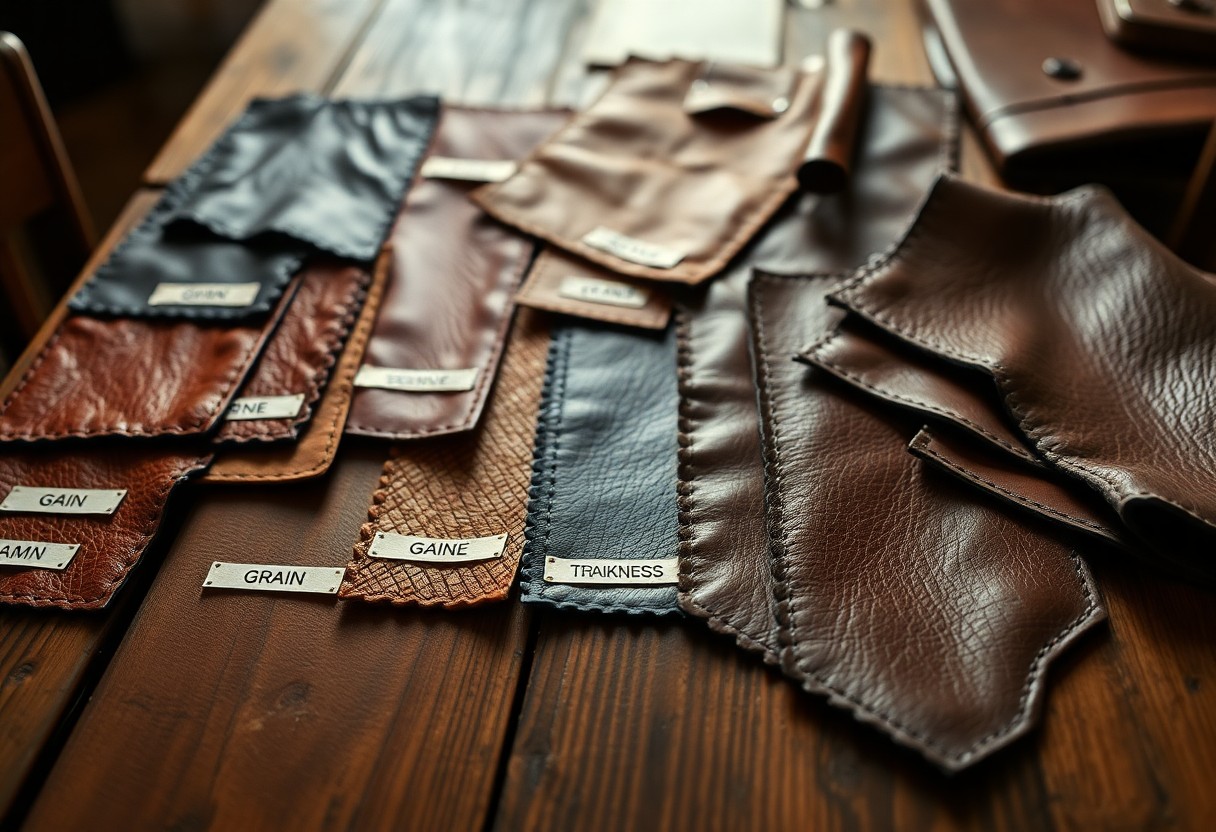
Key Factors That Influence the Quality and Value of Leather
While numerous variables can affect leather quality, the primary factors include animal source, hide preservation, tanning process, and finishing techniques. Each of these elements plays a vital role in determining the durability and aesthetic appeal of your leather products. Gaining an understanding of these factors empowers you to make informed selections when choosing leather items that meet your needs and expectations.
Evaluating Leather Quality Based on Animal Source
One of the most crucial determinants of leather quality is the animal source. The characteristics of your leather are closely linked to the age, breed, and living conditions of the animal from which it originates. For example, calfskin is known for its exceptional softness and flexibility, making it ideal for luxury items, while the more rugged texture of full-grown cattle hide offers durability for everyday use. Additionally, exotic leathers sourced from crocodiles provide unique textures and remarkable durability, making them highly coveted in luxury markets due to their scarcity and appeal.
The Impact of the Tanning Process on Leather Quality
The tanning process is essential as it transforms raw hides into usable leather through various chemical treatments. For instance, chrome tanning results in softer, more flexible leather, whereas vegetable tanning yields firmer and more natural leather options. The quality of the finished leather product is significantly influenced by the expertise and precision applied during the tanning process. Moreover, the duration and temperature control throughout tanning are vital for ensuring the leather maintains its integrity. Inconsistencies in these processes can lead to weak spots and uneven coloring, while rushed methods may produce leather that deteriorates quickly, compromising its quality.
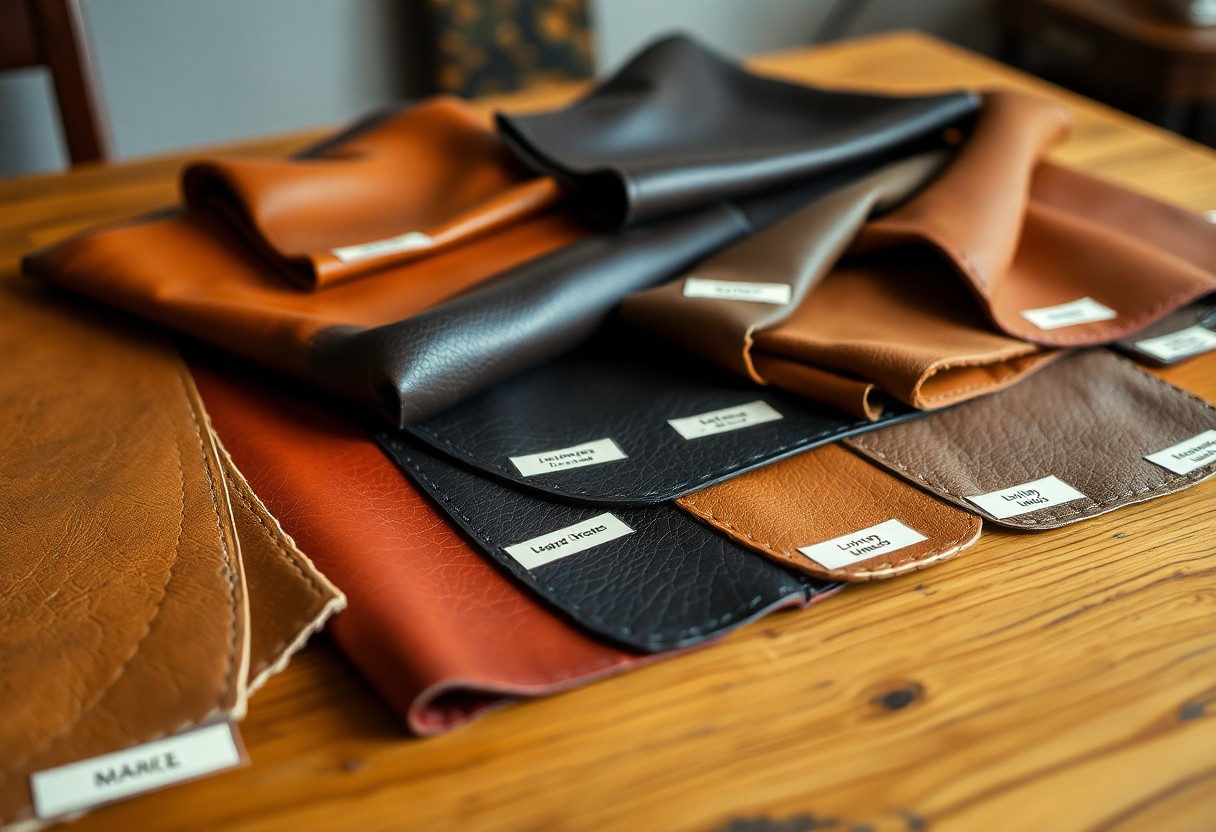
Essential Tips for Identifying and Selecting High-Quality Leather
When assessing leather quality, keep these essential guidelines in mind. Look for full-grain leather that exhibits a consistent color and minimal surface blemishes. Pay close attention to the grain pattern to ensure it appears natural and uniform. Quality leather is typically characterized by a pleasant aroma and should feel smooth to the touch, indicating proper treatment. Additionally, the edges should be clean and well-finished, showcasing the craftsmanship involved. While price can often serve as a reliable indicator of quality, it should never be the sole factor influencing your decision; always consider the other characteristics as well.
Conducting a Thorough Visual Inspection for Quality Evaluation
When it comes to examining leather, the smallest details can lead to significant differences in quality. Look for natural markings and steer clear of leather that displays artificial grain patterns. Your leather should exhibit a uniform color throughout, free from any noticeable discolorations or patches that could indicate inferior materials. The surface should be devoid of excessive scratches or scars, as these can compromise both appearance and durability. A thorough visual inspection can save you from investing in low-quality leather products.
Applying Physical Testing Techniques to Assess Leather Quality
Quality testing can be performed using straightforward yet effective methods. For instance, bending the leather helps you assess its flexibility; watch for any creasing patterns that may indicate inferior quality. Gently pressing your fingernail into the leather surface should result in a temporary indentation, a hallmark of genuine leather. The leather should feel smooth and warm to the touch, rather than cold or plastic-like, indicating the material's authenticity.
It’s important to understand that physical testing can reveal a wealth of information about leather quality. High-quality leather should not crack or develop white marks when bent, which is a sign of poor quality. You can also perform a water drop test to assess authenticity—genuine leather will absorb water temporarily instead of allowing it to pool on the surface, indicating good quality. A flame test, which should only be conducted by professionals, can also confirm the authenticity of the leather, helping you distinguish between genuine and synthetic options.
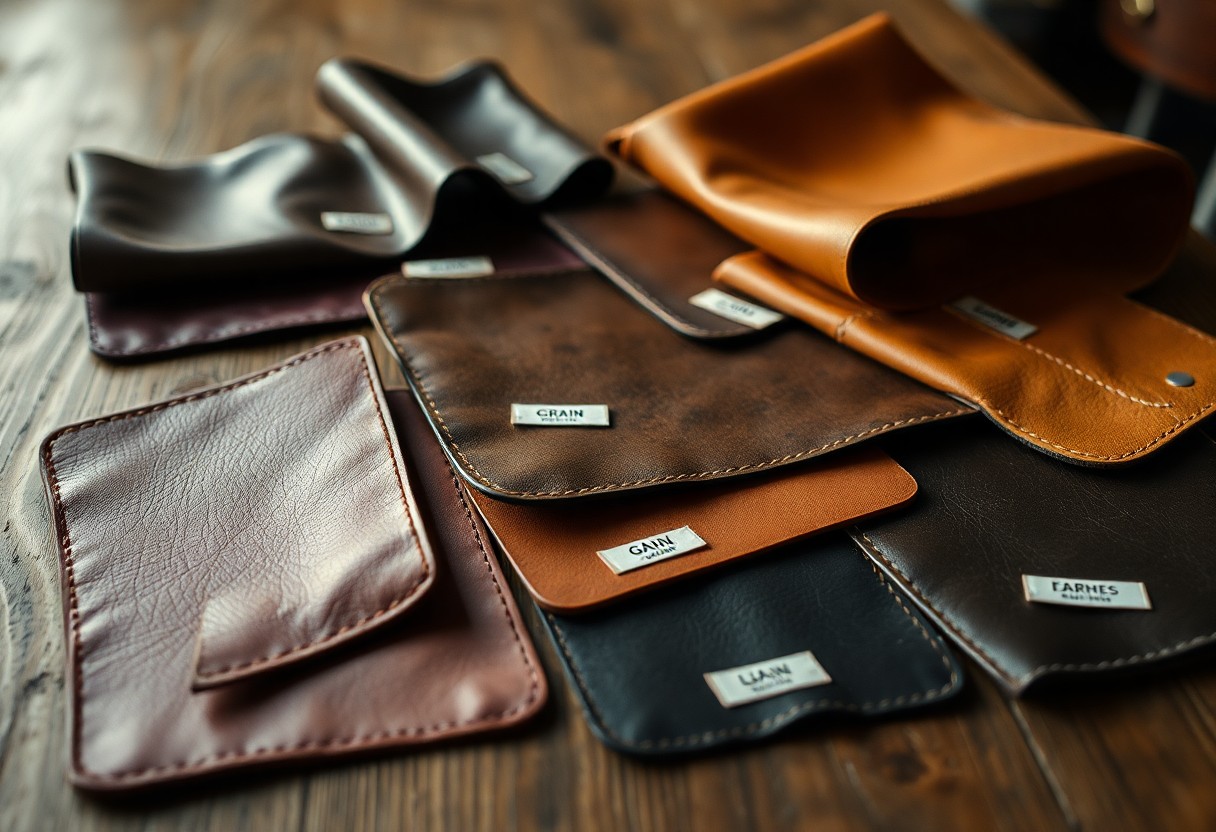
Your Comprehensive Step-by-Step Guide to Optimal Leather Care
Unlike synthetic materials, leather demands specialized care to maintain its quality and prolong its lifespan. Regular maintenance is critical for your leather items to prevent damage and sustain their visual allure, ensuring they remain stylish and functional over time.
| Basic Care | Advanced Care |
| Leather cleaner Soft brush Microfiber cloth |
Leather conditioner Weather protector Leather polish |
Effective Cleaning Techniques for Leather Goods
To clean your leather items effectively, start with a dry brush to remove surface dirt and debris. Always test any cleaning product on a small, inconspicuous area first to avoid damage. When applying leather cleaner, utilize a soft cloth and use gentle circular motions, taking care not to saturate the leather with excessive water, which could cause irreversible damage. Regular cleaning helps to maintain the leather’s appearance and prolong its life.
Proper Storage and Protection Techniques for Leather
When it comes to storing your leather items, thoughtful consideration is crucial to avoid deterioration. Ensure they are maintained in a cool, dry place away from direct sunlight to prevent fading and cracking. It's advisable to apply leather conditioner every 3-6 months to avoid cracking and preserve the leather's natural suppleness. Proper storage also prevents exposure to moisture and temperature fluctuations that can negatively impact leather quality.
The effectiveness of your leather care routine relies on consistent application. Protect your items from water damage by using a high-quality waterproofing product specifically designed for leather. Regular conditioning helps maintain the leather’s natural oils, while proper storage practices prevent shape distortion and color fading, ensuring your leather goods remain in pristine condition.
In-Depth Analysis of the Advantages and Disadvantages of Various Leather Types
To aid in informed decision-making regarding leather products, here’s a thorough comparison of different leather types and their characteristics. Each type presents unique advantages and limitations that affect their suitability for various applications, helping you make the best choice for your needs.
| Pros | Cons |
|---|---|
| Full-grain leather: unparalleled durability and age beautifully over time. | Higher price point, may display all natural marks that some may find unappealing. |
| Top-grain leather: smooth finish, water-resistant and good for everyday use. | Not as durable as full-grain options, may wear out faster under heavy use. |
| Split leather: affordable and flexible, making it an economical choice. | Lower quality, less durable than alternatives, may not withstand heavy use. |
| Nubuck: sophisticated appearance, soft texture that feels luxurious. | Requires regular maintenance to maintain its look and prevent staining. |
| Suede: versatile and comfortable, popular for many fashion items. | Prone to staining, challenging to clean and maintain its appearance. |
Evaluating Durability and Longevity Across Different Leather Types
There is significant variability in how different leather types age and wear over time. Full-grain leather can last for decades when properly cared for, making it a worthwhile investment for high-quality items. In contrast, split leather might need replacement after just a few years of regular use due to its reduced durability, impacting its long-term value for consumers.
Understanding Cost Factors When Choosing Leather
Leather prices can vary widely based on quality and source. Premium full-grain leather can be 5-10 times more expensive than split leather alternatives, making it crucial to balance your budget with the quality you desire. While lower-cost options may seem appealing, they often lack the longevity and durability of higher-quality materials, necessitating frequent replacements.
It’s important to recognize that investing in higher-quality leather often yields better long-term value, as these materials maintain their appearance and structural integrity significantly longer than their lower-quality counterparts, ensuring that your investment pays off over time.
Tailoring Maintenance Requirements Based on Leather Quality
There is a clear connection between the quality of leather and its maintenance needs. Top-grain and full-grain leathers generally require less frequent yet more specialized care, ensuring their characteristics and appearance are preserved over time. Your maintenance routine should align with the type of leather you own to guarantee optimal preservation and longevity of your valuable investments.
Exploring the Diverse Uses and Applications of Leather
Now that you’ve gained insight into various leather types, you’ll discover that each variety serves distinct purposes based on its unique properties and durability levels. The choice of leather can significantly influence the performance of the final product, making it essential to match the right leather with its intended use in both fashion and function.
Fashion and Accessories: The Versatility of Leather
In the fashion arena, applications range from luxurious high-end goods to everyday essentials. For example, you’ll find calfskin used in premium shoes and handbags, while exotic leathers such as crocodile and stingray are prominent in exclusive designer pieces. Your leather accessories could include wallets, belts, and watch straps, each crafted from specific leather types to ensure optimal functionality and style that aligns with current trends.
Furniture and Upholstery: Prioritizing Durability and Style
When considering furniture, full-grain and top-grain leathers are the most popular selections due to their durability and aesthetic appeal. Upholstered pieces made from these durable materials can withstand daily usage while developing a stunning patina over time, adding to their visual allure. Selecting the right leather for your furniture can significantly impact both its look and longevity.
When choosing leather for your furniture, various factors come into play. You’ll want to consider durability ratings, with full-grain leather having the potential to last up to 25 years when properly maintained. The choice of leather affects both aesthetic quality and longevity, ensuring that your investment endures over time, offering both beauty and function.
Industrial Applications: The Demand for High-Performance Materials
Industrial uses of leather require high-performance materials that can withstand rigorous conditions. Specialized leather types are employed in automotive interiors, protective gear, and heavy machinery components, where durability is of utmost importance for safety and functionality.
To ensure optimal performance in these industrial settings, your leather selections must meet specific standards. Safety-rated leathers are utilized in protective equipment, while specialized treatments enhance resistance to heat, chemicals, and wear in industrial machinery applications, making them essential for maintaining safety and efficiency.
Empowering Yourself to Make Informed Choices About Leather
With the knowledge you’ve gained from this guide, you are now empowered to make informed decisions about the various types of leather that cater to your unique needs. Understanding the characteristics of leather will enable you to choose the ideal material for your footwear and accessories. From the versatility of calfskin to the exceptional qualities of exotic leathers, you can now consider durability, comfort, and style against your specific preferences. Each leather type offers distinct advantages, allowing you to align these qualities with your intended use. Whether you’re searching for durable boots made from cowhide or sophisticated dress shoes crafted from calfskin, you can confidently select the perfect leather to suit your style and enhance your wardrobe.
Frequently Asked Questions Regarding Different Leather Types
Q: What differentiates calfskin from full-grown cow leather?
A: Calfskin is sourced from young cattle under one year of age, providing a softer, more supple texture with finer pores. In contrast, cow leather comes from adult animals, resulting in thicker and sturdier leather with more prominent markings. Calfskin is often preferred for high-quality dress shoes, while cow leather is typically used for work boots and more economical footwear options, offering a balance of durability and cost.
Q: What makes shell cordovan stand out among leather types?
A: Shell cordovan is produced from the muscle membrane located beneath the skin of a horse’s rump. This unique leather displays specific traits: it does not crease but instead forms rolls, features a dense shiny surface, and is exceptionally durable. The processing of this leather involves turning it inside out, which distinguishes it from conventional leather types and contributes to its uniqueness and desirability.
Q: How do exotic leathers, like crocodile and stingray, differ in properties and applications?
A: Crocodile leather is soft, flexible, and harvested from the belly and sides of the animal, making it a luxurious choice that often requires CITES certification due to its rarity. Conversely, stingray leather is recognized for its extraordinary hardness and durability but can be more challenging to work with due to its unique texture. Stingray shoes are typically crafted as wholecuts since the material allows for stitching only between its hard “pearls,” adding to their distinctiveness.
The article Guide to the different types of leather characteristics and uses appeared first on My Shoes Finder
